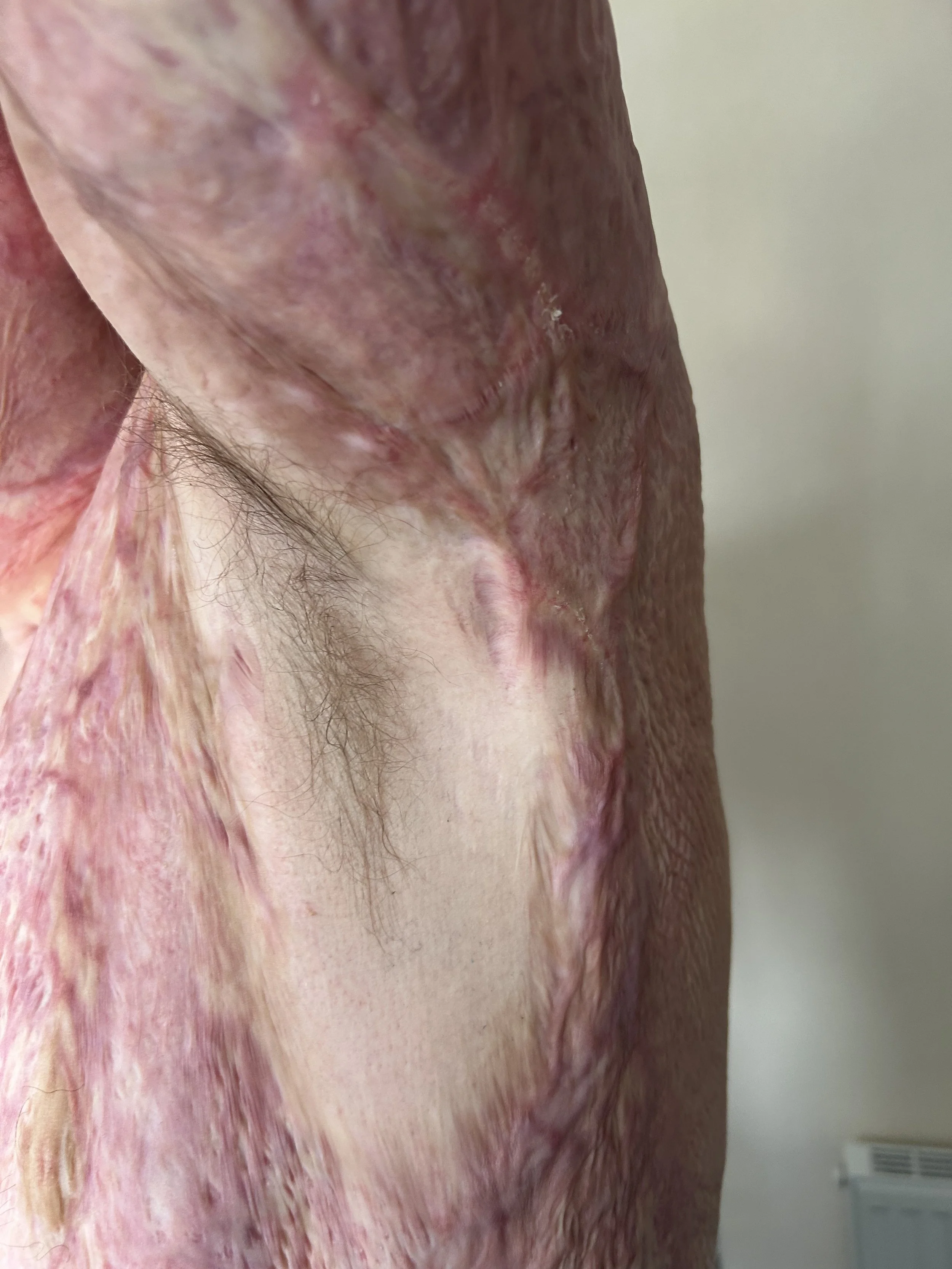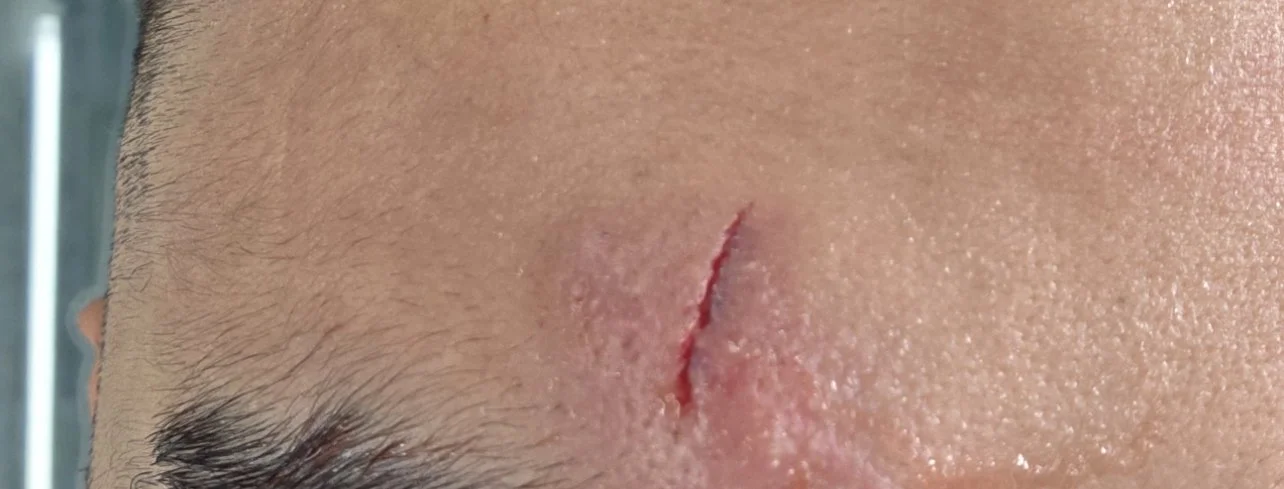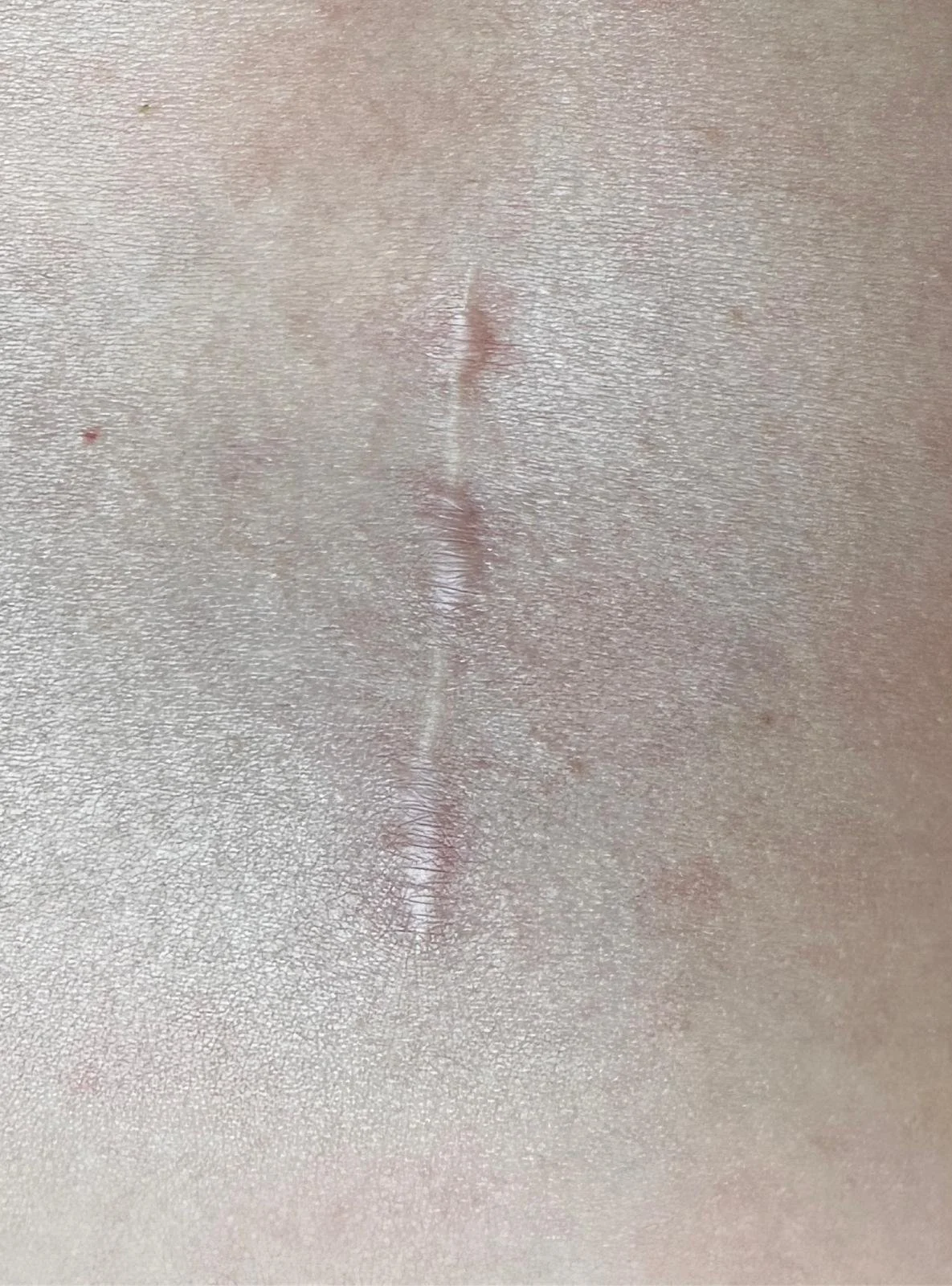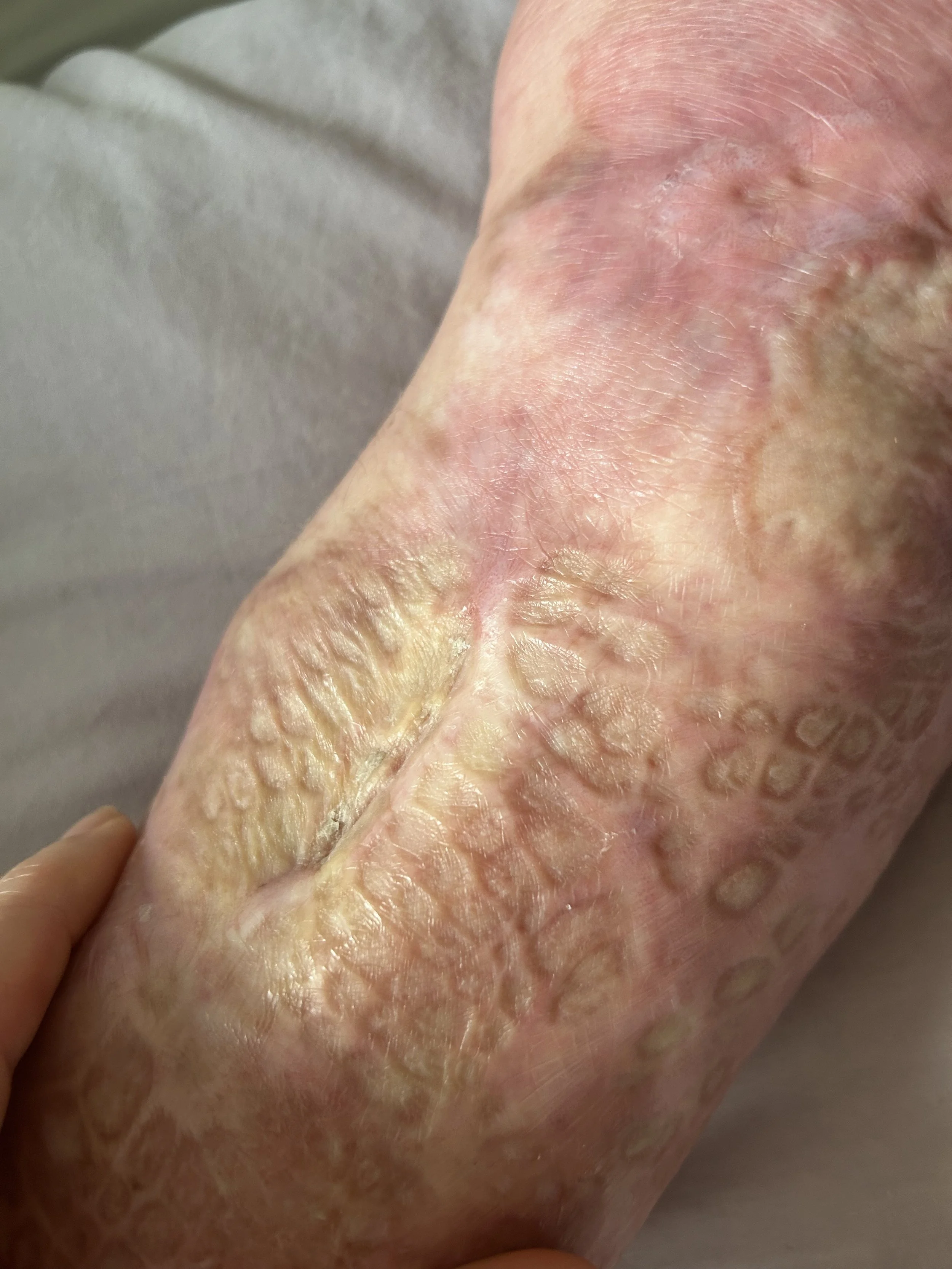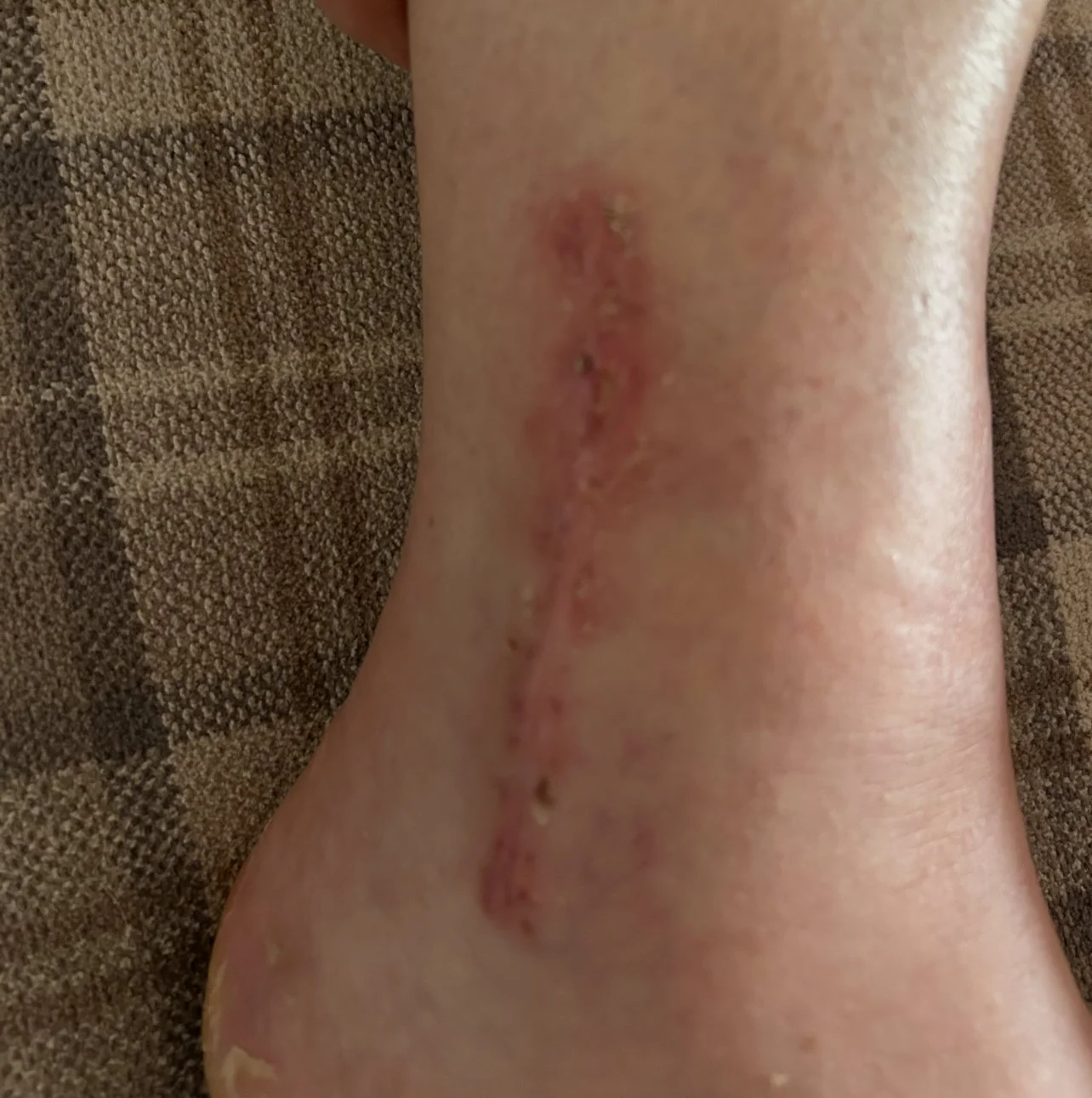
Scars Treated
The examples below highlight some of the common types of scars and situations I treat. They’re designed to help you understand how I may be able to help. They don’t cover every possibility — if your scar isn’t mentioned, please get in touch to see whether I can help.
I’ve likely treated many scars like yours, but I also know every scar and every person is unique.
Your care will always be personalised to your goals, your body and your stage of healing.
Burn scars often vary in size and complexity and can have a huge impact on your quality of life. You may have undergone long hospital stays and had multiple surgeries such as skin grafting. Whether your burn injury is recent or longstanding, you may experience pain, tightness, itching, numbness, discoloration, and restricted movement.
Burn scars can also feel stiff or “stuck” and may limit daily activities or affect body shape and function.
Using expert assessment and comprehensive care, I begin by evaluating the impact of your burn scars on your movement and quality of life. Treatments may include specialist manual therapies, scar massage, stretching, rehabilitation exercises, pressure therapy, and LPG (endermologie) to improve scar quality and mobility.
Together, we develop a personalised plan, tackling your physical challenges with courageous, compassionate care, focused on reducing discomfort, improving function, enhancing the appearance of your scars and helping you reach your goals.
Burn Scarring
Road Traffic Accidents and Trauma
Scars from road traffic accidents or other injuries can vary in size, depth, and complexity — sometimes multiple scars are in different areas. You may have sustained a degloving injury (large areas of skin and tissue loss). You may experience pain, tightness, itching, numbness, or discomfort, which can affect movement or body symmetry. Emotional impacts, such as self-consciousness or frustration over physical limitations, are common.
I approach your care courageously, tackling complex cases that may feel overwhelming, and provide strategies to manage symptoms and the limitations they may cause. Treatments may include exercise programmes, manual scar mobilisation, stretching, silicone therapy, and LPG (endermologie) to improve scar quality, flexibility and function.
Together, we will develop a comprehensive, personalised plan to reduce pain and tightness, restore function, and support your confidence in achieving your goals.
“RuthAnne stands out as the most knowledgeable and dedicated burns and scars physiotherapist I’ve encountered. Her expertise, compassion and genuine care have been a tremendous support to patients and healthcare professionals in the burn community. I am truly grateful for her guidance and support on my journey to recovery”
-Andreas Christopheros, Acid attack survivor and Campaigner
If you’ve recently had a cut or laceration, you may be wondering how to care for it to minimise scarring. Effective early treatment can make a significant difference in the final outcome. Often people are encouraged to massage soon after injury but this advice is not always helpful, and if massage is indicated I can show you how best to do it.
Your wound may still be healing, or it may have just closed. Redness, tenderness, or slight itching is normal, but taking the right steps now is key to preventing problems later.
I provide compassionate guidance on best practices once your wound has healed. If needed, I’ll monitor your scar’s progress and suggest treatments like scar mobilisation, taping, silicones and cream to maximise the outcome and treat any symptoms along the healing journey.
Together, we’ll create a personalised plan to help your scar heal as well and comfortably as possible, aiming for the best long-term outcome.
Lacerations
Surgical Scars, Flaps and Grafts
You may have had surgery recently or many years ago, resulting in one or more scars. These could be a linear scar, like from a hip replacement or breast surgery or more complex, such as skin flaps or grafts. You may have needed skin grafting following conditions such as necrotising fasciitis or meningitis.
Your scar might feel painful, tight, itchy, numb, or “stuck.” It may also limit movement or affect your body’s symmetry. These symptoms can be frustrating and affect daily life.
I will carefully assess your scar and how it affects you personally. Early guidance may include the best use of silicone products, creams, or tapes, and instruction in massage techniques if appropriate. Treatments include manual scar mobilisation, LPG (endermologie), and tailored exercise therapy - all applied at the appropriate time following your surgery or injury.
Together, we’ll create a clear, comprehensive, and personalised treatment plan with realistic expectations and a timeframe for your recovery and improvement.
There are many inspiring stories, but they’re not always easy to collect. They take time to document properly and, more importantly, they’re often deeply personal and difficult to share. At Scarchange, case studies are only shared with full consent, and you will never be pressured to share your treatment journey. Unfortunately I find it extremely difficult to ask for stories or reviews, but if you offer, I am delighted. As Scarchange grows, more case studies will appear here — shared only when individuals choose to offer their experiences to help others navigate their own injuries and to highlight the benefits of scar rehabilitation.
Click the images to read more…
Real Life Stories
Scar I Tend Not to Treat
While I treat a wide range of scars, there are some types I generally do not manage:
· Keloid scars
· Scars from self-harm that are not raised and have no physical symptoms e.g. pain, itch, movement limitations
· Acne scars
· C-section scars (unless they are complex and / or you have already been seen or are currently being treated by a women’s health physiotherapist)
· Scars from some aesthetic procedures
· Scars that have no physical symptoms and appearance can only be improved by more invasive techniques such as laser or surgery
If your scar falls into one of these categories, I can often advise on who is best placed to help, so you can still access the care and support you need.


